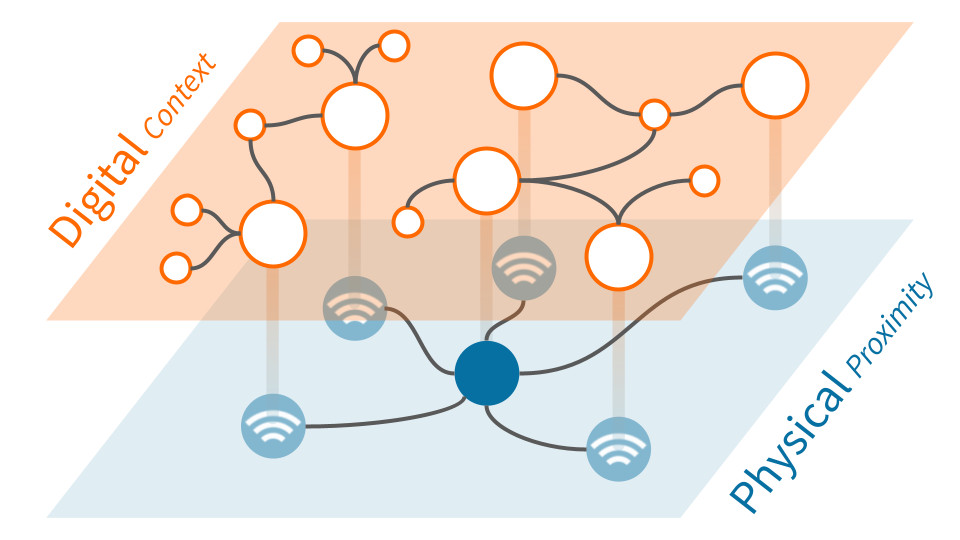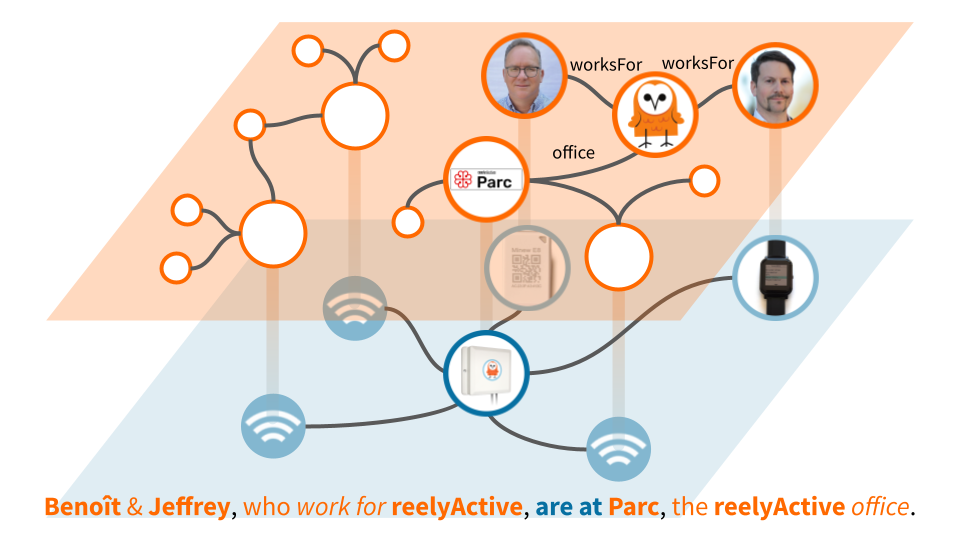
Computers make sense of the physical spaces
in which we live, work and play,
to help us freely exchange information
about who/what is where/how,
for whatever matters to us.
Imagine the best qualities of the Web scaled to the physical spaces in which human interaction naturally occurs. Now imagine that Web dynamically adapting to—and made accessible to—whomever/whatever is present.
You are imagining context-aware physical spaces (#CAPSpaces).
Physical Proximity…
In #CAPSpaces, abundant ambient data is collected & processed by technologies already present in the space.
Occupants are dynamically and opportunistically discovered at a human scale.
…Digital Context
Occupants are dynamically and opportunistically linked with their digital twins on the Web.
In #CAPSpaces, relevant information about who/what is where/how is exchanged as hyperlocal context.
Whereas the Internet & the Web erased the constraints of physical distance to facilitate information exchange on a global scale… …#CAPSpaces
Context-aware physical spaces embrace the constraints of physical distance to facilitate information exchange at a human scale.
Whereas the Internet & the Web foster countless applications by enabling computers to make sense of the digital world in which computers themselves operate and interconnect… …#CAPSpaces
Context-aware physical spaces foster countless novel applications by enabling computers to make sense of the physical world in which we humans live, work and play.
Whereas the Internet & the Web rose to ubiquity as a decentralised open architecture buoyed by open source community initiatives… …#CAPSpaces
Ubiquitous context-aware physical spaces will almost certainly replicate the proven success of a decentralised open architecture employing open source technologies.
And finally, whereas much of the commercial success of the Internet & the Web stems from what might literally be described as "a walk in the PARC"...

Developers, developers, developers!
Enough reading. Create #CAPSpaces with a Pi!

